Combat aircraft. The amazing fate of a training fighter
Sometimes the fate of airplanes can easily surpass the most badass detective story. This happened with the I-26 aircraft, more precisely, with its training version I-26UTI or UTI-26.
It was decided to design and build this aircraft in accordance with the decision of the Government of the USSR of March 4, 1940. That is, even before the adoption of the MiG-3, LaGG-3 and Yak-1 fighters.
It is quite normal to take care of an airplane that will become a training class for pilots who will have to be retrained for new technology. The decision on the I-26 was made mainly because the design of this aircraft initially allowed it to be converted into a two-seater trainer aircraft at low cost.
In addition, of the three groups of designers (Mikoyan and Gurevich, Lavochkin and Gorbunov with Gudkov, Yakovlev), only Yakovlev had experience in building training aircraft, and his UT-1 and UT-2 became "ducklings", classic training machines that gave a ticket to the sky not one thousand fighters.
So it is absolutely not surprising that the training aircraft, on which Soviet pilots will be retrained for new equipment, will have to be born within the walls of the Yakovlev Design Bureau.
But who would have thought that an aircraft for transporting and training flight personnel would later turn into a combat vehicle and play a more important role than the one that was originally intended for it.
How did it happen that the two-seater trainer aircraft became a fighter again? Moreover, during the time that the Yak-7, as a fighter, was on the assembly line, 18 modifications were developed, of which 10 were serially built. A total of 6 399 copies of the aircraft were built.
The main reason for the massive rework was the beginning of the Great Patriotic War and the huge losses of the Red Army Air Force in the first months of the war. The losses had to be compensated for, so an unprecedented decision was made - to convert the two-seater planes back into single-seater ones and send them to the front.
The Yak-7UTI is a serial training fighter with dual control, built according to the drawings of the prototype UTI-26-2.
The aircraft has been modified to simplify the design. The retractable tail wheel was replaced with a conventional "crutch", the engine operating speed was reduced from 2700 rpm to 2350 rpm, and one 7,62-mm ShKAS machine gun with 500 rounds of ammunition was left from the armament. This was enough for the shooting practice.
The Yak-7UTI made its first flight on May 18, 1941, and the aircraft was mass-produced from June to November. All 186 aircraft were manufactured out of the planned 600.
Yak-7UTI became a forge of personnel for the Red Army Air Force. All pilots, regardless of which aircraft they subsequently flew, LaGG-3, Yak-1, MiG-3 or further models, went through school on the Yak-7UTI.
But in addition to training work, the Yak-7UTI was used as a reconnaissance and spotter. The application turned out to be successful, a good view from the cockpit allowed for visual observation, and the high speed made it difficult for the air defense to work on the aircraft. The Yak-7UTI scouts were also used by representatives of the command for personal flights with the aim of reconnaissance of the terrain and the location of troops, both their own and the enemy.
Yak-7 with M-105PA engine and VISH-61P propeller
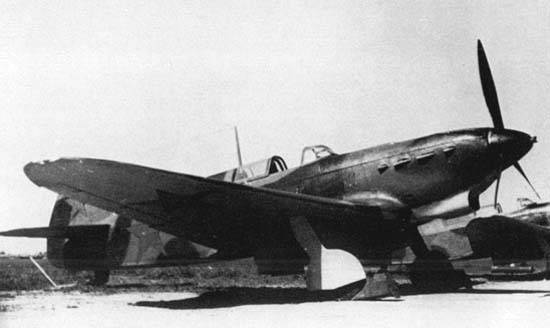
This was the conversion of the Yak-7UTI two-seat training fighter into a single-seat combat fighter.
The alteration was carried out at the plant number 301 in the Moscow region of Khimki by the forces of the plant brigades and the brigade of the Yakovlev OBK under the leadership of the leading engineer K. B. Sinelnikov.
A lot of work was done on the aircraft during the alteration (it is difficult to call it modernization):
- the chair and controls were removed from the rear cockpit, an armored backrest was installed;
- dismantled the photo-machine gun;
- conventional gas tanks were replaced with protected ones and a system for filling the tanks with carbon dioxide from a cylinder was installed;
- installed a ShVAK motor-gun with 120 rounds of ammunition and another ShKAS machine gun. Ammunition of machine guns was brought to 1500 rounds;
- guides for launching the RS-82 were installed under the wings, plus they were equipped with electrical equipment for launching shells.
Almost a miracle happened: in comparison with the Yak-1, the single-seat Yak-7 has become more perfect! The centering shift improved the longitudinal stability, the change in the elevator and stabilizer design improved controllability, the empty cab made it possible to transfer operational loads or technical personnel when relocating parts, or to place an additional fuel tank.
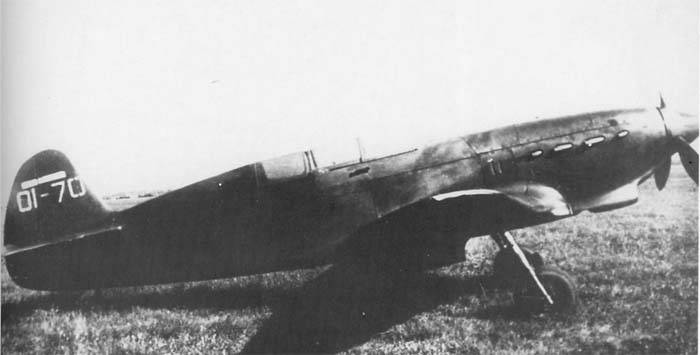
The improvements were reported to Yakovlev, who reported upstairs. As a result of the NKAP, by two orders and two resolutions of the State Defense Committee, the aircraft began to be mass-produced at two plants at once: in Khimki at plant No. 301 and in Novosibirsk at plant No. 315.
At the same time, a project was developed to install a more promising M-7 engine on the Yak-107.
The aircraft showed itself very positively in operation. Especially impressive were his anti-screw abilities. To get the plane out of the spin, it was enough to put the pedals and the stick in neutral position and the plane exited. In this regard, the Yak-7 was much better than the LaGG-3. The suspension of rockets did not worsen the aerodynamic characteristics of the aircraft, and the good stability provided the Yak-7 with less dispersion than that of the MiG-3 and LaGG-3 when firing at targets on the ground.
Yak-7A
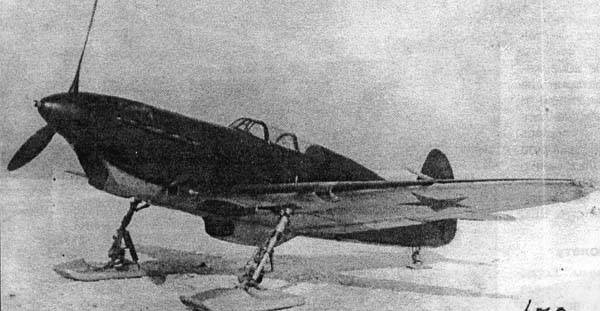
A very decent modification of the fighter mainly consisted in the radioification of the fighter. RSI-4 "Malyutka" receivers and RSI-3 "Eagle" transmitters began to be mounted on all aircraft.
The tail wheel was returned to the design, which was removed by pneumatics into the fuselage. Installed additional flaps, which covered in flight the niches for the wheels and landing gear.
In place of the machine-gun belts link retractors, link collectors were installed, which made it possible to eliminate the holes in the hood and ensure the preservation of the links for reuse. Reduced the radii of the grooves for machine guns in the engine hood.
Installed a system for filling gas tanks with exhaust gases from the engine. The pneumatic reloading system of the gun was dismantled, leaving only the mechanical one.
The armament of the Yak-7A was left the same, a 20-mm ShVAK cannon and two ShKAS 7,62-mm machine guns.
Yak-7A was produced at the plant number 153 in January-May 1942. A total of 227 aircraft were built.
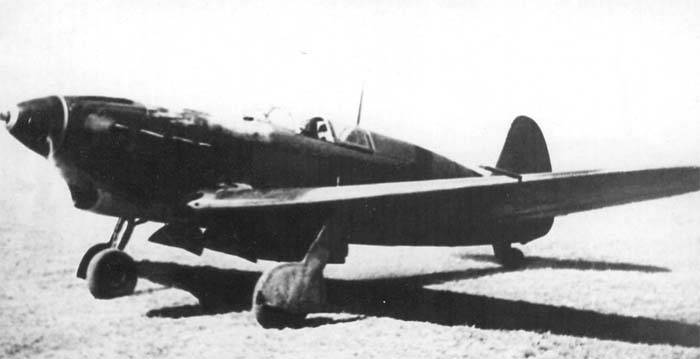
Production aircraft showed worse performance than the original I-26-2 model. The weight of the aircraft increased by 73 kg, the speed dropped to 476 km / h at the ground and to 550 km / h at an altitude of 5000 meters. The time to climb 5000 m has increased from 5,9 to 6,8 minutes.
The Yak-7A performed well against the FW-190A and Me-109F. The 434th IAP (later the 32nd Guards IAP) equipped with these aircraft shot down 163 enemy aircraft during its stay in the skies of Stalingrad.
The high survivability of the Yak-7A was noted. Multiple bullet and projectile hits did not lead to fatal damage, and after repairs in the field, the fighters continued combat work.
Yak-7B
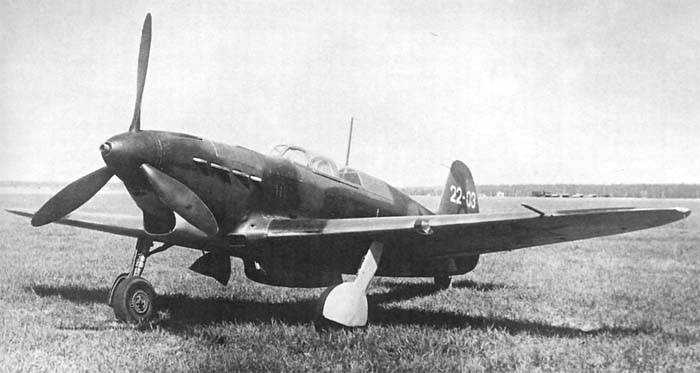
Further development of the Yak-7A with the M-105PA engine. Notable for more powerful weapons and aerodynamic improvements.
Two 12,7 mm UBS machine guns were added to the ShVAK motor-gun by enormous efforts. The ammunition for machine guns was unequal, 260 rounds for the left machine gun, 140 for the right. In addition, 6 RS-82 rockets or two bombs weighing from 25 to 100 kg could be placed under the wings. Since May 1942, Yak-7B aircraft began to be produced without guides for rockets.
A huge amount of work has been done on aerodynamic improvement of the aircraft. The air supply ducts were sealed, the finish of the flaps, hatches, and hood sections was improved. Improved water and oil cooler tunnels have been installed.
The engine revs were increased to the original 2700 rpm.
As a result, the flight characteristics of the Yak-7B, despite the alteration of the hood associated with the installation of large-caliber machine guns, the increase in mass and the installation of the mast of the radio station, turned out to be higher than that of the Yak-7A.
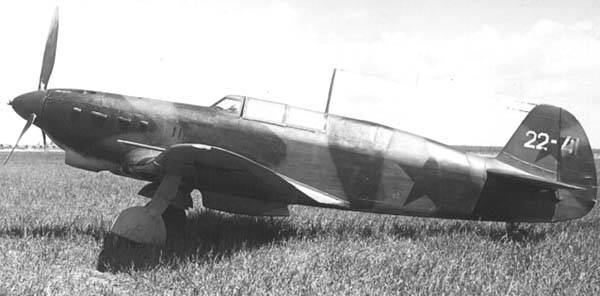
Enhanced armament brought the Yak-7B to the lead in terms of the weight of a second salvo. ShVAK and two UBS fired a salvo of 2,72 kg per second. This was higher than that of all Soviet fighters. Yak-1, Yak-7 and Yak-7A were inferior by 1,57 times, LaGG-3 by 1,36 times, MiG-3 and in general by 2,56 times. But more interesting was the superiority of the Yak-7B over German fighters. The Me-109F was 2,87 times inferior, the Me-109G-2 (with three firing points) 1,62 times. The only one who had the upper hand was, of course, the FW-190.
Considering that with the Yak-7B, work was constantly carried out to improve flight performance (more modern radio stations, radio semi-compass), and the improvements did not affect the flight characteristics and combat data of the fighter.
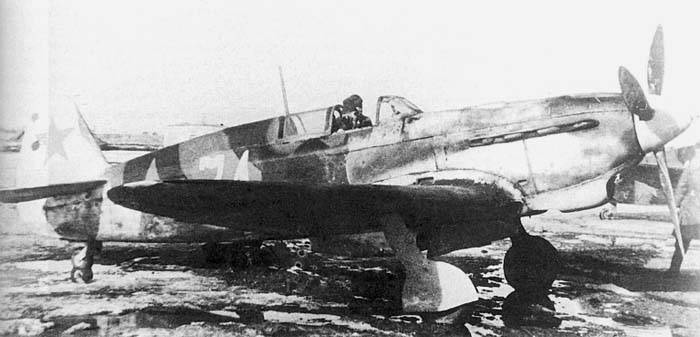
Significant merit in this belongs to the Yakovlev Design Bureau employees, who step by step improved the design of the aircraft.
Naturally, within the walls of the Flight Research Institute and TsAGI, comparisons were made between the Yak-7B and classmates, both Soviet-made and German equipment, both purchased before the war, and captured, and received under Lend-Lease. Based on the research, it was concluded that the Yak-7B with the M-105PA engine is not only not inferior, but also superior to many samples of foreign technology.
Yak-7B aircraft proved to be very effective in the skies of the Battle of Stalingrad and in the Kuban.
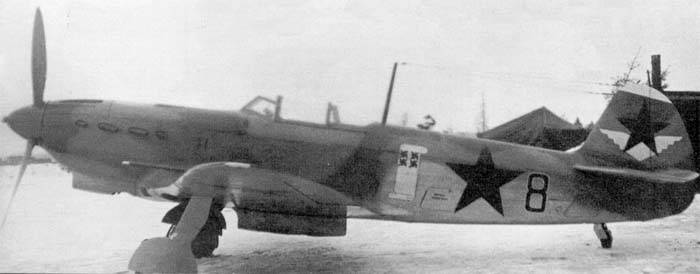
Assessing the effectiveness of the Yak-7B, many experts, based on the analysis of air battles, concluded that of all Soviet fighters by 1943, the Yak-7B was the best.
The Yak-7B calmly conducted air battles with the Me-109 in the horizontal and vertical directions. In the horizontal direction, the Yak-7B and Me-109F had the same speed, but the Yak-7B easily entered the tail of the Me-109F in horizontal turns. On the vertical, the Yak-7B lagged behind the German fighter, as well as the Me-109F had an advantage in gaining speed.
The main disadvantages of the Yak-7B were considered:
- Excessive weight, which affected the speed gain;
- high resistance due to water and oil radiators;
- there was practically no backward review;
- poor celluloid in the lantern, which makes observation difficult and makes it impossible to fly with a closed hood;
- a weak engine for such a mass;
- when shooting, you have to remove your hand from the throttle sector and transfer it to the trigger, which worsens the control of the aircraft and knocks down the accuracy of the sight;
- the plane requires long and good take-off sites.
The Yak-7B began to feel somewhat better in the sky after a new, more powerful M-105PF engine, with a capacity of 1180 hp, was installed on it. Plus, once again, we have worked on aerodynamics.
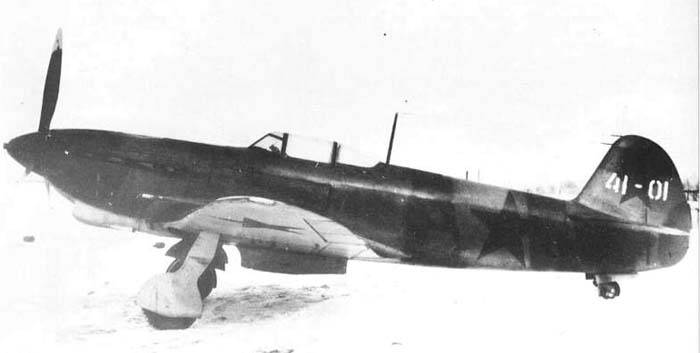
The best way to express evolution in numbers is to compare the plane with the enemy's machines. The Yak-7B with the M-105PF had an advantage over the three-point Me-109G-2 at the ground by 23 km / h and at an altitude of 1000 m - by 16 km / h. However, already at an altitude of 5000 m, the Me-109G-2 surpassed the Yak-7B M-105PF in speed by 24 km / h. Above 5000 m, the Messerschmitt's speed advantage reached 80 km / h.
The Yak-7B with the M-105PF engine was produced at two factories, # 153 in Novosibirsk and # 82 in Moscow. The planes of the Moscow plant turned out to be a little heavier (the difference was 25-35 kg) and had a speed lower by about 15 km / h.
Only two factories in the period from May 1942 to July 1944 produced 5 aircraft.
At the end of 1942, experimental work was carried out by the Yakovlev Design Bureau's technical team to replace the glazing of the Yak-7. Pilots everywhere complained about the lack of backward visibility from the Yak-7, which gave obvious advantages to the enemy. The Yakovlev Design Bureau responded by sending the required number of trained specialists to the 42 IAP, which operated as part of the North-Western Front.
The OKB employees cut off the gargrot directly in the field and installed a teardrop-shaped lantern.
The aircraft converted in this way were tested by the pilots of the 42nd IAP in combat conditions, accompanied by bombers. The converted aircraft made 242 sorties, took part in 6 air battles, shooting down 4 enemy aircraft and losing one of their aircraft. The cockpit with a drop-shaped lantern received positive feedback from the pilots and was recommended for use on all fighters of the Red Army Air Force.
Directly at the front, a brigade of the OKB A.S. Yakovlev carried out work to improve the view back from the Yak-7 M-105PF cockpit - the gargrot was cut off, the lantern was given a drop-like shape. From November 17 to December 13, 1942 on the North-Western Front in 42 IAP (commander F.I.Shinkarenko) 240 IAD 6 VA military tests for combat use were carried out.
Test results: 242 sorties, 6 air battles, 4 enemy aircraft were shot down, including: Me-109F - 2, He-126 - 1 and FW-189 - 1; their losses - one Yak-7B. The cockpit with improved visibility received a positive assessment from the pilots and was recommended for use on all fighter aircraft.
Another modification of the Yak-7B with the M-105PF was put on stream. It was called the Yak-7B MPVO and was intended for service in air defense units. These aircraft were equipped with an RPK-10 radio compass and a landing light installed in the left wing. In total, about 300 vehicles of this modification were produced.
Yak-7D (long-range)
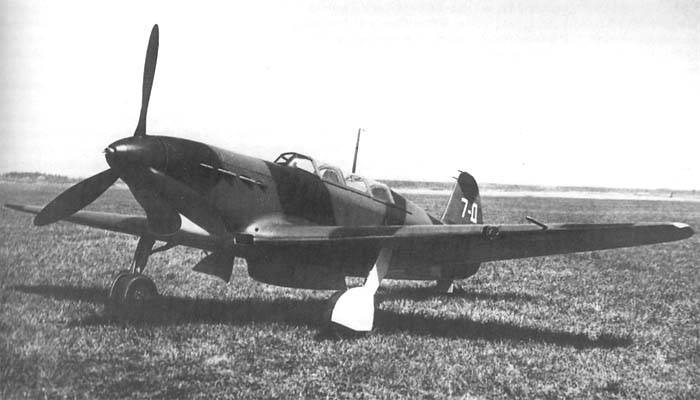
It was a big job of converting the Yak-7 into a long-range reconnaissance aircraft with an observer (passenger) or with an aerial camera in the rear cockpit. Initially, a Yak-7V fuselage with an M-105PF engine was used. The landing gear, tail unit and tail wheel were taken from the Yak-7B, the wing was redesigned.
To ensure adequate flight range, the aircraft was equipped with 11 fuel tanks with a total capacity of 925 liters, which required a new large wing. Eight gas tanks were installed in the wings, the rest in the fuselage. The oil tank was made larger by 65 liters. Installed in a regular place behind the engine.
The new wing had the same area as the standard one (17,15 sq. M.), But a smaller span, 9,74 m instead of 10 meters. The wing tips were made less rounded; in the future, it was planned to install slats.
The standard equipment of the Yak-7D did not differ from the Yak-7B. The photo reconnaissance version was equipped with an AFA-B aerial camera. The camera had a remote control, brought to the control stick and could take 50 photographs from an altitude of 8000 meters. In addition, the aircraft was equipped with an oxygen supply system for the pilot, which made it possible to stay at an altitude of 8 meters for up to two hours.
To lighten the aircraft, the armament was reduced. The machine guns were completely removed, the ShVAK cannon ammunition was halved, to 60 shells.
The result is a long-range multifunctional reconnaissance aircraft.
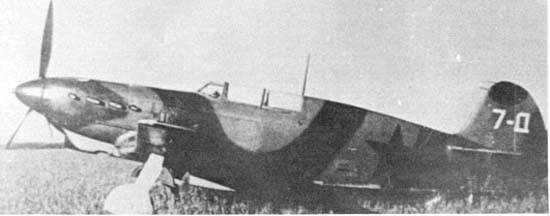
The design of the aircraft made it possible to easily re-equip the aircraft for solving various tasks. Installation of AFA-B took 5-6 minutes, dismantling - about 1 minute. Installation of the chair for the observer-spotter - 5 minutes, dismantling the chair - 3 minutes.
There was also a minus: refueling the plane took a very long time. Since the wing tanks were connected in series, it took a while for the gasoline to overflow from the throat at the end of the wing to the tanks at the root. Refueling could take up to 1 hour.
Naturally, the equipment of the second cabin, oxygen tanks, an increase in the amount of fuel and oil could not but affect the flight performance. The maximum speed of the heavier Yak-7D dropped by 30-40 km / h in all ranges. The time to climb 5 meters has increased by almost a minute, and the practical ceiling has also become 000 meters less.
However, in terms of range and duration of flight, the Yak-7D was unmatched. The flight range was 2 km, the duration was 285 hours.
For comparison, the Fw.189 reconnaissance spotter flew much closer (665 km) and "hung" in the sky for much less (2,5 hours). Although the blood spoiled our soldiers in full.
Interestingly, after a series of tests, which passed quite normally, the plane was not presented for state tests. Yakovlev preferred not to risk it and ordered to stop all work on the Yak-7D.
However, the work was not lost in vain, all the developments in layout and equipment were subsequently used to create long-range fighters Yak-9D and Yak-9DD.
Yak-7M (modified)
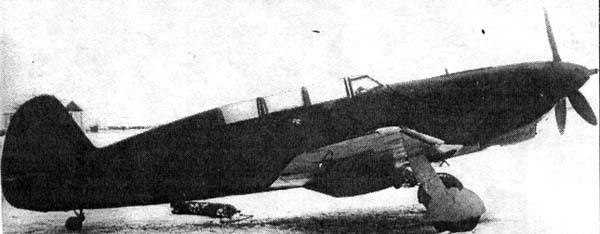
This is a very interesting work, which went parallel to the first conversion of the Yak-7UTI into a combat aircraft. the work was carried out at plant number 21 in Saratov by the forces of plant specialists and a group of engineers from the Yakovlev Design Bureau, who were sent to the plant to help establish the production of the Yak-1.
The Yak-7M was a standard Yak-7UTI with an M-105PA engine. The wingspan was reduced to 9,74 m (the same one born within the walls of the Yakovlev Design Bureau under the use of slats), automatic slats were installed, the area of the landing flaps was increased from 1,77 to 2,15 sq. M.
The main changes concerned weapons.
ShKAS machine guns were dismantled along with cartridge boxes. The ShVAK motor-gun with 120 rounds of ammunition remained.
At the roots of the wings, two more ShVAK cannons were installed with an ammunition load of 110 shells per barrel.
In order to accommodate the guns, two gas tanks had to be removed. To compensate for fuel losses, a gas tank with a capacity of 80 liters was placed in the second cabin.
The attachment points and wiring for the RS-82 rockets have been retained. The wings have been heavily reinforced.
As a result, at the end of 1941, an aircraft with cannon armament was obtained, which was unmatched. The weight of the second salvo was 3,84 kg / s.
This was more than that of the LaGG-3 with three cannons (1SHVAK and 2B-20S) by 1,5 times, the MiG-Z - by 3,2 times, the Me-109E (with two wing MG-FFs) - by 1,5, 109 times, Me-4F - XNUMX times.
In terms of flight characteristics, the Yak-7M was not inferior to other aircraft. The increase in the mass of the aircraft did not greatly affect the controllability, and the piloting technique was greatly facilitated thanks to the automatic slats.
The speed characteristics are slightly lower than those of standard aircraft. The maximum speed at the ground is 470 km / h, at an altitude of 5 meters - 000 km / h.
In October-December 1941, the aircraft was admitted to state tests, which he finished with satisfactory results. It was noted that the fighter is available for use by intermediate-skilled pilots and can be easily mastered. It was recommended to launch the Yak-7M into mass production.
However, for some reason, the aircraft did not go into production, although in 1942 the presence of an aircraft with such weapons would have been more than useful. Moreover, apart from the placement of a gas tank in the second cabin, none of the innovations was applied. Automatic slats "because they were not needed", wing guns due to the fact that significant wing reinforcement was required.
In general, some kind of sediment remains from the results of work on the Yak-7M. The exit turned out to be an aircraft with a gorgeous second salvo, capable of destroying any aircraft of that time. The Germans produced such an aircraft only in 1942 (Focke-Wulf 190), and even later - La-7 in 1944, and even then, three-cannon La-7 with B-20 cannons were produced in very small quantities.
What is the reason for Yakovlev's refusal from the Yak-7M, we will never know. Perhaps there were good reasons for this, and it is possible that the project was "screwed up" by Yakovlev himself, since it is known that Alexander Sergeevich was, to put it mildly, jealous of his subordinates.
The argument that "wing cannons are not good, since when firing from one cannon, the aiming is lost", voiced in many studies, personally seems to me delusional. Who will fire from ONE wing cannon if it will inevitably lead to the unfolding of the plane? Physics has not been canceled.
Apparently, there were other reasons that we do not know about the termination of work on the aircraft, which passed the cycle of state tests.
Yak-7P (cannon)
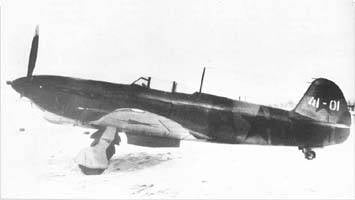
This modification appeared through a complex of work on the Yak-7B with the M-105PF engine. The UBS synchronous machine guns were dismantled and two synchronous ShVAK cannons were installed instead.
The cannon installations were assembled from parts and assemblies of other aircraft: the front attachment points from the La-5 aircraft, the rear assemblies from the Hurricane.
The work was carried out by a brigade of engineers of the 1st Air Army. In November 1943, the aircraft was presented to the Air Force Research Institute for testing.
The tests revealed:
- replacing three-cam washers with single-cam ones increased the rate of fire of synchronous guns by 150 ... 175 rounds per minute;
- the installation of new cannon armament did not worsen the aircraft's flight and aerobatic qualities.
Were identified and disadvantages:
- the retraction of the cannon links was unsuccessful: when firing in the air, the links and sleeves fell into the stabilizer, damaging its leading edge;
- the absence of fuses for synchronous guns excluded the possibility of a quick and reliable termination of spontaneous firing and was fraught with the danger of shooting through the propeller blades. During the tests, there were two lumbago.
In the conclusion, it was said that replacing two large-caliber machine guns with two synchronous cannons deserves attention, since they do not worsen the flight characteristics of the aircraft. It was decided to install two B-20 synchronous cannons on the prototype and conduct another test cycle.
The Yak-7P with three ShVAK cannons was shown to the chief designer A.S. Yakovlev, but in the end it did not go into production. The armament scheme used on the Yak-7P was subsequently used on the Yak-9UT and Yak-3P.
Yak-7PD
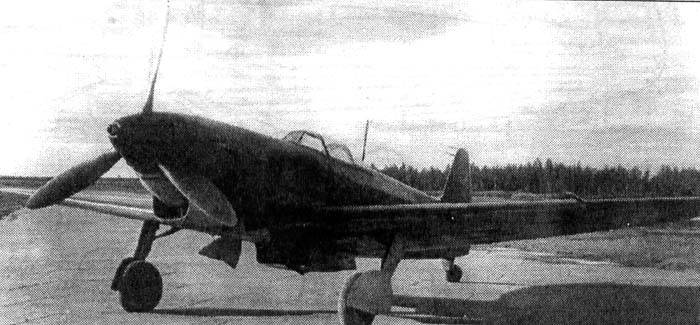
A high-altitude fighter-interceptor specially designed for use in air defense. Continuation of work begun on the Yak-5 interceptor project in 1940.
The prototype M-105PD engine with an E-100 supercharger became the heart of the development. The gargrot and the lantern were redesigned according to the Yak-1 type, armored glass and a radio mast were installed. Radio equipment was not installed, since the aircraft did not have a generator and shielding.
The armament consisted of one ShVAK motor-gun with 120 rounds of ammunition. This was clearly not enough, since the interceptor usually operates at altitudes close to the maximum ceiling and repeated attacks at such altitudes were unlikely. But it was decided to sacrifice the high-altitude weapons.
The Yak-7PD was superior to the high-altitude MiG-3 with the AM-35A engine at a speed of up to 5 meters and was inferior to it starting at 000 meters. The La-6 with the M-000A engine was faster at altitudes up to 5 meters and was inferior to the Yak-82PD above 4 meters.
The practical ceiling of the Yak-7PD was higher than that of any Soviet fighter of that time.
But there were a number of significant drawbacks that called into question the need for the Air Force in such an aircraft. The M-105PD engine was not completed, in addition, manual control of the turbo couplings, which did not have a pump for pumping oil, complicated the operation of the aircraft, distracting the pilot from managing the need for constant monitoring of the supercharger.
In addition, the pilot was simply physically unable to accurately maintain the nominal boost pressure in accordance with the change in atmospheric pressure, as a result of which the aircraft's flight characteristics were reduced.
Based on the test results, work was carried out to install a turbocharger control machine and one UBS machine gun with a caliber of 12,7 mm with an ammunition load of 200 rounds. After all, a radio station was installed.
Despite the "work on the mistakes" carried out, the Yak-7PD did not go into production. Mainly due to the lack of knowledge of the M-105PD engine and the absence of a great need for high-altitude interceptors.
What can you say about the Yak-7 aircraft in general? It was one continuous experiment. An experiment on converting a training aircraft into a fighter, reconnaissance and spotter, the introduction of new developments.
The fact that many developments were later applied in the Yak-9 and Yak-3 airplanes suggests that the work was not in vain. As for the Yak-7 aircraft itself, its role in the battles in the skies of the Battle of Stalingrad and the Battle of the Kuban can hardly be overestimated. The plane was in place.
LTH Yak-7B
Wingspan, m: 10,00
Length, m: 8,50
Height, m: 2,75
Wing area, м2: 17,15
Weight, kg
- empty aircraft: 2 490
- normal takeoff: 3 010
Engine: 1 х М-105PF х 1 180 HP
Maximum speed km / h
- near the ground: 514
- at height: 570
Practical range, km: 645
Rate of climb, m / min: 862
Practical ceiling, m: 9 900
Crew, prs: 1
Armament:
- one 20-mm ShVAK cannon (120 rounds of ammunition);
- two 12,7 mm UBS machine guns with 400 rounds of ammunition (left machine gun - 260, right - 140);
- under the wing it was possible to hang six RS-82 or two bombs from 25 to 100 kg each.
This was the fate of the originally UTI-26 training aircraft. The aircraft fought and delivered reconnaissance data and became a platform for many developments, some of which found their application in the future.
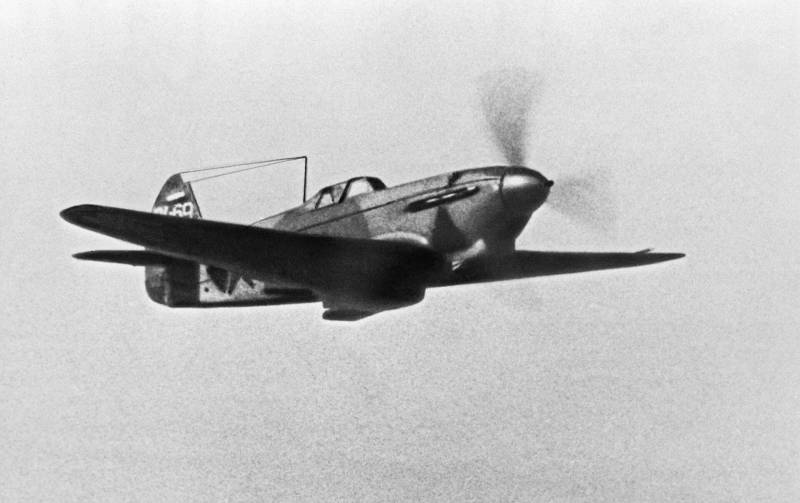
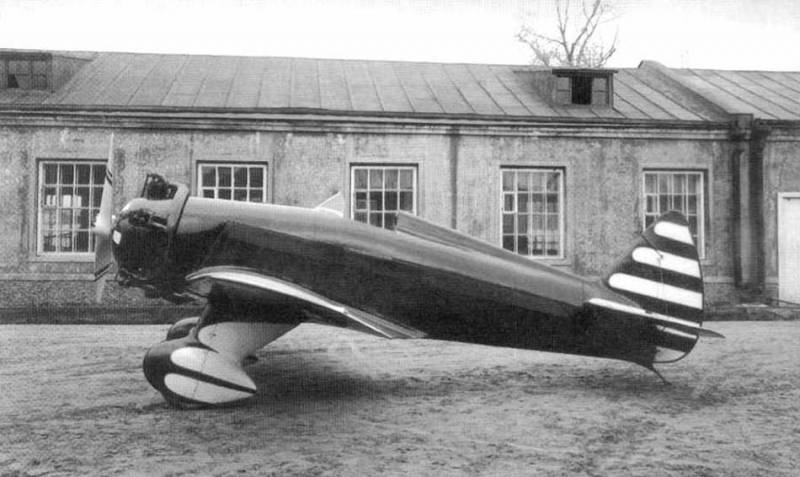
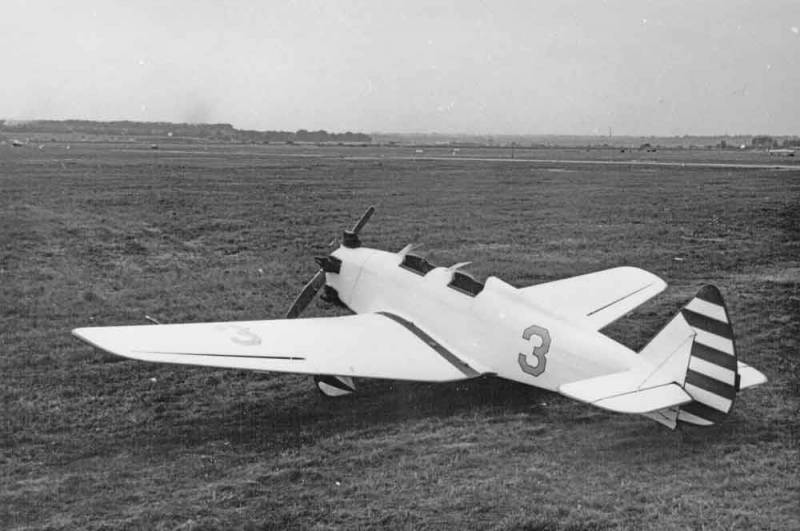
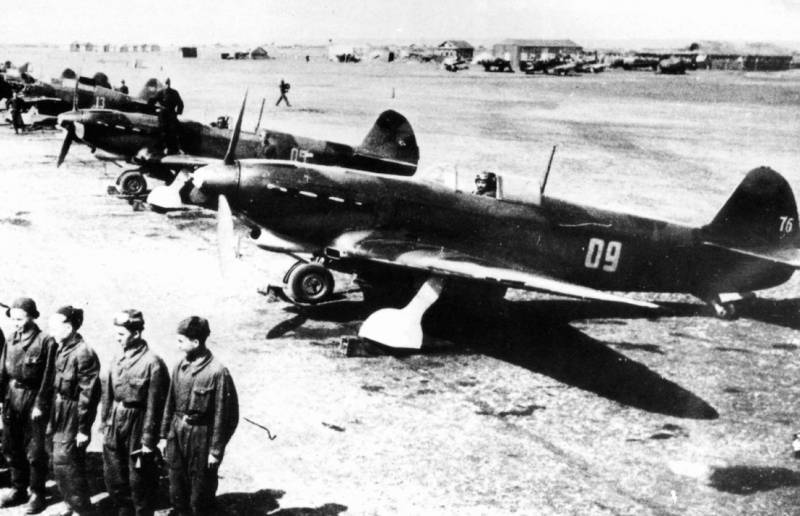
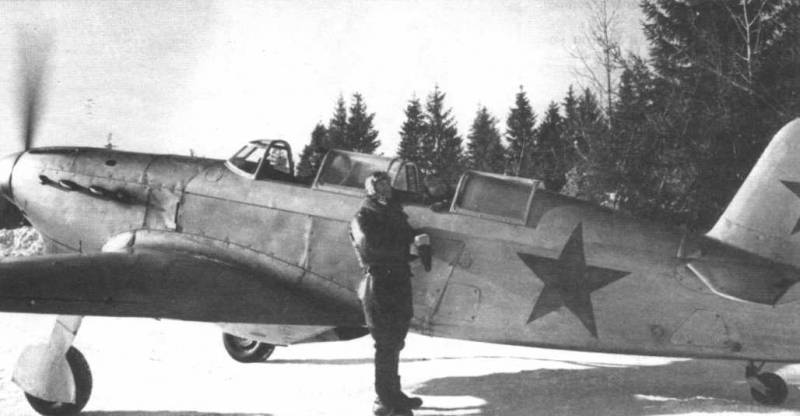
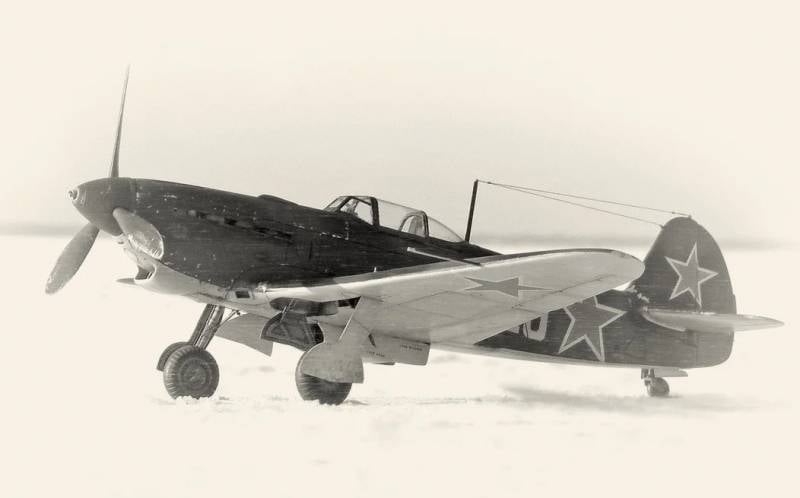
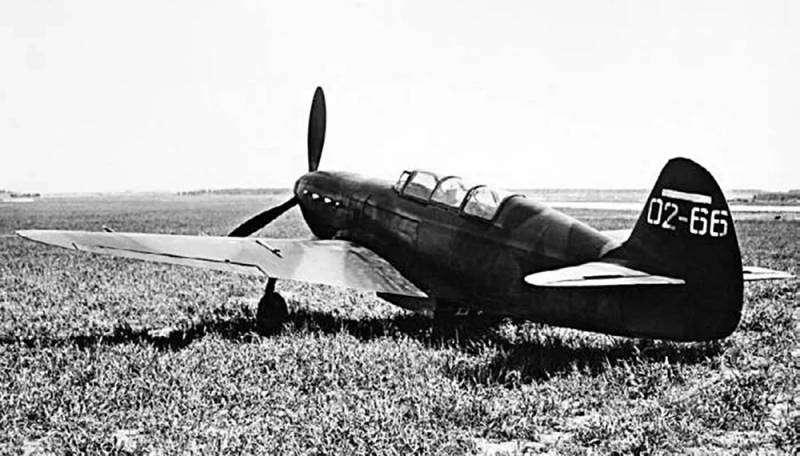
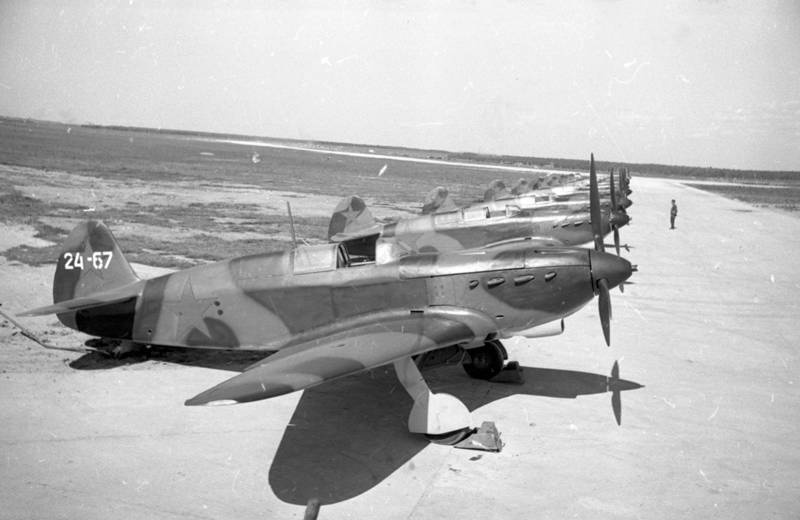
Information